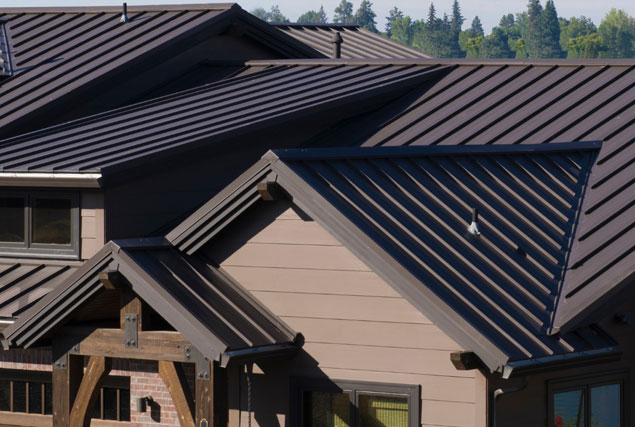Roof Construction
Discover our passion in restoring your roof to the way you dreamed it to be.
Roofing is a critical component of any building, providing protection from the elements and enhancing its aesthetic appeal. When it comes to roofing construction, there are various types and materials to choose from. In this guide, we’ll explore the key types of roofing construction and materials to help you make informed decisions for your roofing project.

Types of Roofing Construction
- Gable Roof: Known for its classic triangular shape, the gable roof is simple and effective in shedding rain and snow.
- Hip Roof: Features slopes on all sides, offering excellent stability and resistance to high winds.
- Mansard Roof: A stylish choice with steep slopes on all sides, creating additional space for living or storage.
- Gambrel Roof: Resembles a barn roof, providing ample space in the attic area.
- Built-Up Roofing (BUR): Comprises multiple layers of bitumen and reinforcing fabrics, offering durability and waterproofing.
- Modified Bitumen Roofing: An evolution of BUR, featuring modified asphalt for enhanced flexibility and longevity.
- Single-Ply Membrane Roofing: Lightweight and easy to install, with options like TPO, PVC, and EPDM for energy efficiency and durability.
- Green Roofing: Utilizes vegetation and soil to create a living, eco-friendly roof that provides insulation and environmental benefits.
- Metal Roofing: Known for its longevity, metal roofing comes in various materials such as steel, aluminum, and copper.
- Asphalt Shingles: A popular choice due to affordability and ease of installation, available in various styles and colors.
- Wood Shingles and Shakes: Offer a rustic, natural appearance, with cedar and redwood being common choices.
- Slate Roofing: Exudes elegance and durability, typically found in high-end homes.
Roofing Materials
- Pros: Affordable, easy to install, versatile.
- Cons: Moderate lifespan, environmental concerns.
- Pros: Exceptional durability, low maintenance, energy-efficient.
- Cons: Higher upfront cost, can be noisy during rain or hail.
- Pros: Natural beauty, eco-friendly (when sourced responsibly).
- Cons: Requires regular maintenance, susceptible to rot and pests.
- Pros: Unmatched longevity, elegant appearance.
- Cons: Expensive, heavy, requires specialized installation.
- Pros: Aesthetic diversity, durable, fire-resistant.
- Cons: Heavy, costly to repair or replace.
- Pros: Mimics the look of natural materials, lightweight, low maintenance.
- Cons: Can be less durable than natural counterparts.
Conclusion: Choosing the right roofing construction and materials is crucial for the longevity and functionality of your roof. Consider factors such as climate, budget, aesthetics, and maintenance requirements when making your decision. Always consult with roofing professionals to ensure the best choice for your specific needs, and enjoy a secure and attractive roof that enhances your property’s value and curb appeal.
